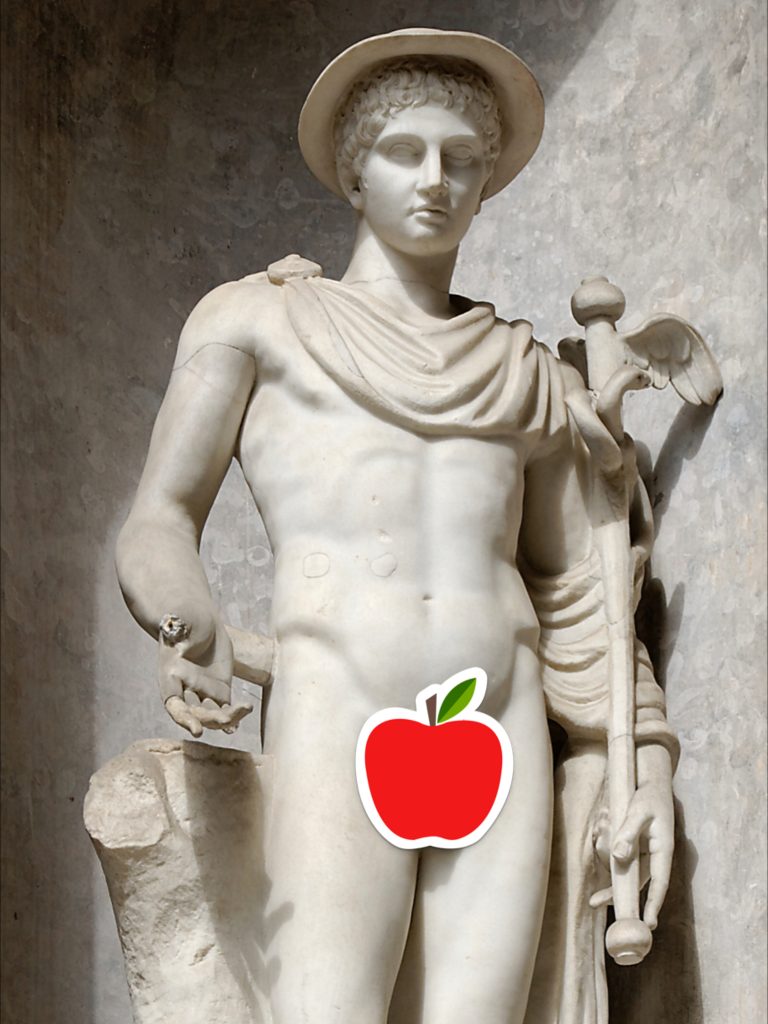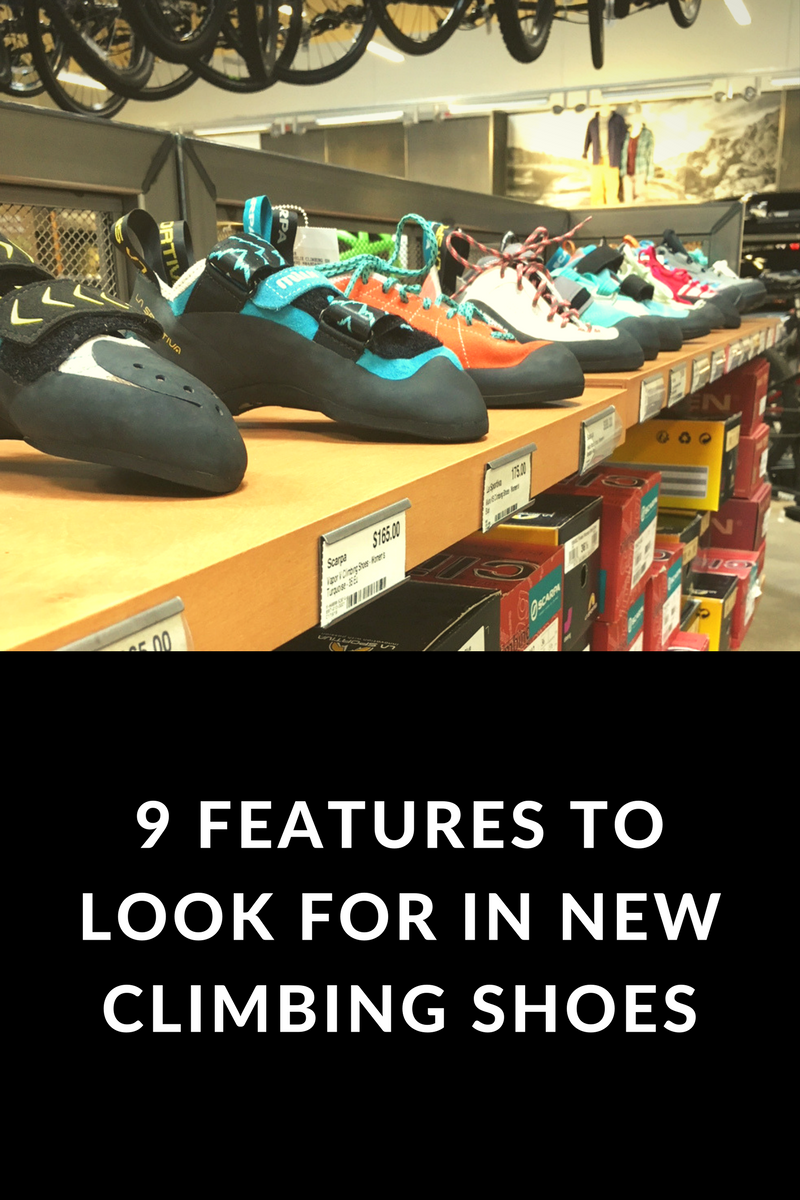When buying a pair of climbing shoes, one needs to consider many factors. You’ll often finding yourself asking questions like: Should they be aggressive? Will I be climbing crack, or bouldering? How much should I downsize? Which brand fits me better?
It can all feel a little intimidating. Thankfully, I’ve put together this guide to help you navigate the maze that is buying climbing shoes. Have no fear, as here is a list of features that you should look for when buying new climbing shoes.
Non GMO
Table of Contents
GMOs (genetically modified organisms) have been getting a lot of press lately. Many people are skeptical of eating foods that have been altered and played with by people wearing lab coats, and rightly so. Despite a movement to label GM’d foods, there still isn’t much transparency. We, the consumers, don’t always know what exactly is being done to the things we eat every day. There is still some speculation as to whether or not these products are good for our health, and there have been few long term studies to determine what effect these foods have in the long run. We should be eating the nutrients evolution provided for us, and not be subject to the work of meddling on the part of large corporations.

That’s why we should play it safe, and avoid GMO’s like the Frankenstein abominations they are. Frankly, this ethic should extend beyond foods to other products we buy. Climbing gear should be no exception. By purchasing genetically modified climbing gear, you are supporting an industry bent on controlling how we live our lives.
Your next pair of climbing shoes should be non GMO. Before you buy a pair, check the tag. Your shoe rubber should be synthesized from only the most natural, pure hydrocarbons. The leather should be taken from the hides of a pure bred, grass fed cow. Even the shoe box they come in needs to be sourced from a paper mill constructed entirely of non-GMO building materials. In fact, make sure your climbing shoe salesperson should be non-GMO as well, just to be safe.
Feet Tickling Technology
Of all the features listed here, I think that this one will have the greatest positive benefit on both climbing performance and training. If you feel like paying a little extra, buy some shoes with feet tickling technology. Feet tickling is a training innovation that has been quickly growing in popularity, and companies are adding feet ticklers to their shoe line to meet the demand.
The concept is simple. By keeping the feet tickled, it hones the climbers focus, strengthens their core, and encourages them to climb swiftly and efficiently. It challenges and hardens all the aspects that go into climbing performance-the physical, the mental, and the emotional.
Have you ever laughed so hard, that you feel like your abs got a workout? That is the goal of Feet tickling climbing shoes. By keeping the abs tight, it trains the core, maintains body tension, and makes those tough, gymnastic moves on overhangs a little easier. These shoes were made for climbers who love roofs, like the ones found at Priest Draw, or some Chattanooga Roof Cracks.
Some may be skeptical of the mental training aspects that feet ticklers can provide. It may seem counterintuitive, or even down right detrimental to climbing performance. Make no mistake, with some practice, these climbing shoes will improve your focus immensely. They force you to concentrate your will to stay present during your send. It’s like weight training, but for your brain. In fact, after only a few sessions with these shoes, famed Icelandic climbing trainer Ølæf Lêïfthōrsœnn called them “Prættÿ Gœød”. Had feet tickling shoes been around when Arno Ilgner was writing The Rock Warriors Way, all the book might have said was: Buy Feet Tickling Climbing Shoes.
Half Spider, Half Shoe, all Send
Okay, so I know I just said that we should avoid Genetically Modified climbing gear, but I am willing to make one exception. New for 2018 are Spider shoes. These are climbing shoes that have been spliced with the genes of a spider. They provide all of the benefits of being a spider-the web slinging, the wall climbing, the eight eyes-with none of the nastiness.

If you ask me, Spiders are gross enough to warrant genetic modification. Look at them. Ew. Ugh. Disgusting.
Shock Activated Lights
Remember when you were a kid and they had those lights in the soles that lit up whenever you took a step and they flashed brightly and you wanted to just stomp around everywhere and you thought you were the coolest when your mom bought them? I don’t. Remember when your mom had finally saved up enough money to buy you said cool shoes and you were so excited but then your dad blew the cash on liquor like usual? I sure do.
Nowadays, you can take back your childhood with new shock activated light up climbing shoes! Every foot hold, toe hook, heel hook, and knee bar will have your shoes lighting up like the Fourth of July. This may seem like a dumb, purely aesthetic gimmick, but there are some practical applications to light up climbing shoes. If you find yourself stuck up on a wall with no means of self rescue, the lights in your shoes can be used to signal search and rescue. Say, for example, when they finally do make a real life Jurassic Park*, use your climbing shoes to distract a hungry T-Rex, just as Dr. Alan Grant did with a road flare.
Odor Control
The burden of every climber is the scent of their shoes. After wearing them all day, the sweat, bacteria, fungus, and dirt can interact with your shoes in just the right way to create a putrid, horrendous smell. It can be so bad that it would be rude to remove them in an enclosed space, i.e. a climbing gym, for fear of gassing your fellow climbers.

But fear not, for there is a solution available. La Sportiva, Five Ten, and other shoe manufacturers now include odor control technology in their climbing shoes. These shoes come equipped with cans of air freshener. After a sweaty climbing sesh, simply give your cans a spray, and the odor will be replaced with a more pleasant scent. Now available in Fresh Lily, Old Oak, and Pabst Blue Ribbon.
Wheels In The Heels
Approaches suck. They get in the way of what’s really important-the climbing. Approaching the crag is really just hiking, and as I pointed out in this post, hiking is boring. To combat this, you can now buy shoes with wheels built into the heels. Heelies, the company that introduced the world to a short lived fad in the early 2000’s, is now entering the climbing/approach shoe market.
As a young lad, I could be seen rolling about the schoolyard with my fresh pair of Heelies. After falling on my butt many times, I got the hang of them, and I like to think that I got pretty good. Unfortunately, my school banned their use, which quickly ended my “heeling” days. Where I used to roll, I now just walk like a normal bipedal Plebian.
Now, I can combine my new hobby, with the old. This meeting of worlds has resulted in me rolling to the crag in style. Once these heely climbing shoes become more popular, hiking will go the way of the climbing hex. Roll to the gym, roll to the crag, heck, you can probably even roll right up the Himalayas, if you felt so inclined.
In order to help foster an image of sustainability, the wheels in these shoes will be made with the recycled rubber of discarded Mercedes Sprinter Tires. If you ever find yourself stranded, salvage some rubber from your van/house, and be on your way to sendsville!
Sandpaper Integration
You know what really grinds my gears? Slimy, polished climbing routes. At every frequented crag, there are routes that have been climbed to a slippery sheen. It detracts from the climbing experience, especially if it’s a popular route. Not to mention the strong urge to wash my hands of the shoe rubber and skin oil of a million climbers afterwards.
Often, climbers will take a wire brush to polished holds to rough them up, and make them a little bit more amenable to climbing. This has proven a useful, long standing tactic. Among the heavy haul of gear that you need to huck to the crag, a wire brush seems like a negligible addition to the load. Yet, it ultimately is just one more item that you need to remember. For a wannabe minimalist like myself, I’m trying to cut down on the amount of crap that I own.

I was happy to learn of a new feature that is being built into climbing shoes that would negate the need to bring along a wire brush. It seems that some climbing shoe makers have been spending time at the hardware store. Now, you can buy shoes with sandpaper pasted right onto the rubber! If you encounter a slick hold, whether in the gym, or outside, give it a rub with your climbing shoe. This will rough it up, and make it ripe for the sending.
Sandpaper climbing shoes are available in varying degrees of coarseness. Pick 150 grit for sanding down limestone pockets, or a rougher 50 grit for mean J-Tree style granite.
Winged Shoes of Hermes, the Messenger God
Hermes (or Mercury depending on who you ask), was a prominent god in the Pantheon of Greek mythology. Said to preside over the realms of trade, thieves, and athletes, Hermes is best known as the Messenger God. Swift, light footed, and efficient, he was often depicted as wearing golden sandals outfitted with wings, known as the Talaria. In fact, the famous Nike swoosh logo was inspired by Hermes winged shoes.
In a journey to find the next big thing in climbing shoes, some climbers travelled far and wide. On their journey, they spent 10 years at sea, floating around the Mediterranean on the whims of fate. At Thermopylae, they repelled a million soldier strong Persian invasion by offering them some leftover PBRs, and they nearly lost a game of add on to a Minotaur. Thankfully, these trials were not for loss, for among their spoils were none other than a pair of Hermes’ winged sandals.

The messenger god wasn’t known to be a rock climber. Still, his shoes proved to be the most aggressive there are. They are optimally designed for the meanest overhanging sport climbing and bouldering. Admiring their slick design, aggressive fit, and tasteful color scheme, Hermes reported that his shoes were modeled after La Sportiva Solutions. At press time, the messenger god reported that he didn’t like rock climbing, as he was scared of heights.
Still, these shoes are meant for top climbing performance. The wings, as it turns out, don’t really work. They were mostly for show. The Talaria don’t come cheap. Expect to sacrifice at least three goats for a pair.
Self Tightening
Do yourself a favor, and get buy some self tightening climbing shoes. Right now. I mean it. Buy a pair right at this moment. They will change your climbing forever. When I bought a pair recently, I was finally able to send one of the blue problems at the local gym. When my roommates dog slipped on his pair, she promptly claimed the first canine ascent of La Dura Dura. These shoes make angels sing, and old ladies blush. They’re the best thing since cams with thumb loops.
Like the auto lacing sneakers from Back to the Future Part 2, you just have to slip these on and they cinch down. You have the option to set their tightness level, but the optimum level is at some point after “I can’t feel my toes”, and just short of “kill me now”. Before long, you’ll be walking up your projects.
Think of them like Boa Constrictors. Boas are big, mean snakes that live in the jungle. A Boa kills it’s prey by squeezing it. Every time the animal breathes in, the boa merely strengthens its death vice. Like a Boa, your self-tightening climbing shoes also constrict. Whenever you blow a foot, cut your feet, or display any sort of poor footwork, they will tighten even further. You’ll learn better footwork real quick.
*It’s a matter of when, not if. A boy can dream.
- The Best Campsites Around Big Bear California - February 26, 2021
- Hiking to the Hollywood Sign Via the Brush Canyon Trail - July 13, 2020
- Dirt Cheap Hiking and Backpacking Gear: The Most Affordable Gear on the Internet - July 4, 2020
